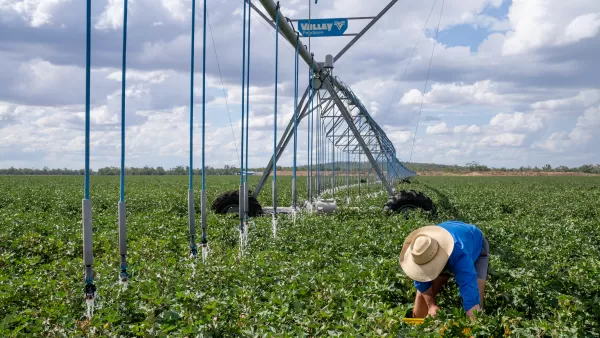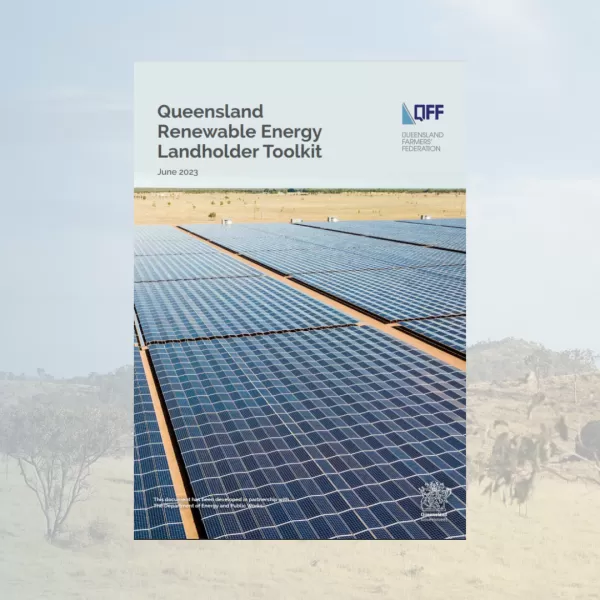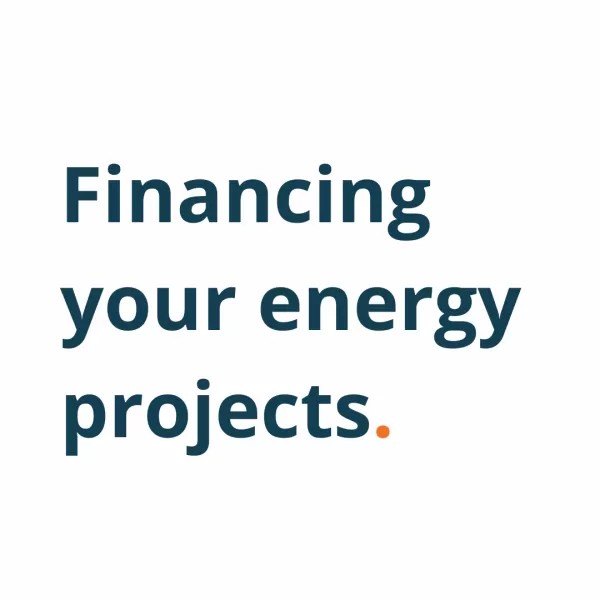Cotton
The cotton industry in Queensland

Irrigation pumping is the major energy consumer in cotton production. Irrigation typically accounts for 45 percent of all energy that is directly used on farm for river irrigation, and up to 75 percent for bore irrigation, with diesel use in tractors and machinery the next largest consumers of energy on farm.
Cotton Australia is the peak body for cotton growers in Australia. CottonInfo have developed energy efficiency information for Cotton Growers at their Energy Use Efficiency Page, which includes energy efficiency tips, case studies, fact sheets and other information.
My BMP is the Cotton industry’s Best Management Practice Program. See the Energy and Input Efficiency Module on the myBMP program where you will find guidelines and practices to optimise energy consumption and input use in cotton farming.
Cotton growers across Queensland have implemented solar power, variable speed drives, and pump efficiency monitors to significantly reduce energy costs, water, and diesel consumption, while also achieving a substantial decrease in greenhouse gas emissions. Refer to the case studies below for more information.
About 50% of a cotton farms energy consumption is for irrigation and about 25% for high-load tractor operations. Around 90% of a farms’ energy consumption is diesel according to the Cotton Info and CRDC Benchmarking report, Improving Energy Efficiency on Australian Irrigated Cotton Farms. The report identified that there are significant opportunities for energy savings on farm.
Cotton in Australia is a billion-dollar industry, underpinning the viability of more than 150 rural communities. More than 1200 farms grow cotton: 40% in Queensland and 60% in NSW. In an average year, cotton employs 10,000 people.
Top energy efficiencies for the cotton industry.
Pumping and irrigation - Savings from Variable Speed Drive installation, pump replacements and maintenance. Changes to irrigation design and automation.
Lighting and general - Replacement and retrofitting of lights with LEDs, infrastructure, and general changes.
Solar Systems - Ranging in size from 5-100kW systems.
Explore cotton case studies

Maranoa-Balonne
Western Queensland Cotton
Energy Savings NA Cost Savings NA

Southern Downs
Cecil Plains Cotton Farm
Energy Savings 42% Cost Savings $11,200
Explore cotton related resources

Featured
Queensland Renewable Energy Landholder Toolkit
The Queensland Renewable Energy Landholder Toolkit to assist and inform landholders as they respond to and negotiate with energy industry representatives about accessing land and developing renewable energy projects.

Featured
Electricity Price Changes in Regional Queensland 2024-25 Fact Sheet
By July each year, the Queensland Competition Authority (QCA) sets the electricity prices that are passed onto residential and business addresses in regional Queensland. It is important for farmers to be aware of their energy usage and the tariff.

Financing your energy projects
Once you’ve identified energy savings or renewable energy opportunities for your farm, the next challenge is to find the funds or finance to make it happen.
There are a number of options to either reduce up-front costs or reduce the borrowing costs for the project. These can include new efficient pumps, motors, compressors, vehicles, lights, renewable energy systems and many other products.